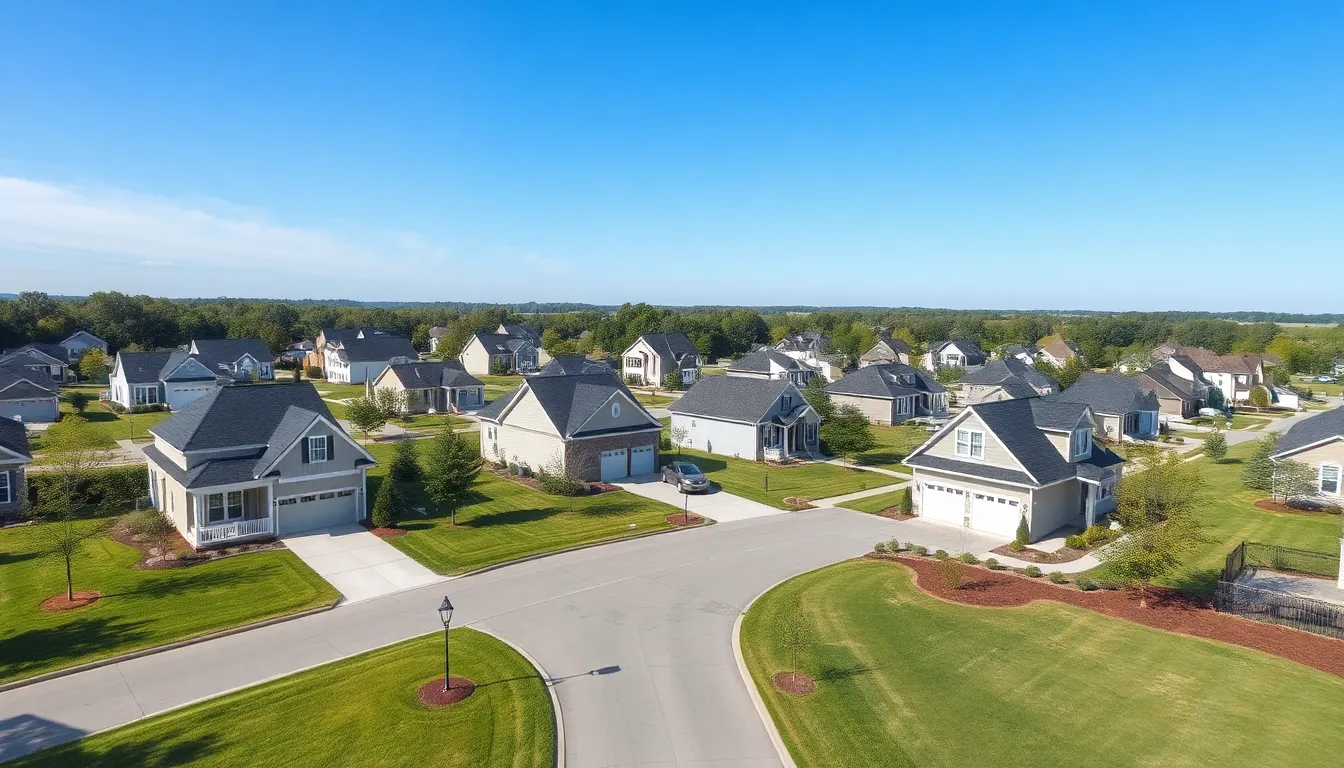North Carolina is a hidden gem that’s got folks buzzing about its cost of living. Imagine enjoying the charm of Southern hospitality while your wallet stays pleasantly plump. With affordable housing, low taxes, and a variety of lifestyle options, it’s no wonder people are flocking to the Tar Heel State.
But wait, is it really as good as it sounds? Spoiler alert: yes! From the vibrant cities to the serene countryside, North Carolina offers something for everyone without breaking the bank. So grab your sweet tea and let’s dive into the numbers that make living in NC not just a dream, but a reality worth pursuing.
Table of Contents
ToggleOverview of NC Cost of Living
North Carolina features a cost of living that appeals to many individuals and families. Affordable housing options play a significant role in this equation, with median home prices approximately 24% lower than the national average. Rent prices also remain competitive, with averages around $1,200 per month for a two-bedroom apartment in urban areas.
Everyday expenses, including groceries and utilities, follow suit. Grocery costs remain roughly 10% lower than the national average. Utility prices fluctuate but generally remain manageable; the average monthly bill sits around $150.
Transportation costs also provide a financial advantage. Gas prices usually hover close to 5% below the national average, creating savings for commuters. Public transportation options, while limited in some areas, typically offer affordable fares.
Healthcare expenses contribute to the overall low cost of living. North Carolina ranks highly for healthcare affordability, with average monthly premiums for individual health insurance around $400. Many residents benefit from the state’s access to quality medical facilities.
Taxes add another layer of affordability. North Carolina maintains a low income tax rate of 5.25%, which is appealing compared to the national average. The state’s sales tax rate, approximately 6.75%, remains competitive.
Overall, North Carolina’s combination of low housing prices, everyday expenses, and transportation costs leads to an appealing financial landscape. Embracing the diverse lifestyle options available in both vibrant cities and tranquil rural areas enhances its attractiveness further.
Factors Influencing NC Cost of Living

Numerous factors influence the cost of living in North Carolina, creating a unique financial landscape for residents. Understanding these elements highlights the overall affordability and attractiveness of the state.
Housing Market Trends
Median home prices in North Carolina stand approximately 24% lower than the national average, enhancing affordability. Competitive rent prices average $1,200 monthly for two-bedroom apartments in urban areas, making city living accessible. Rural regions also offer appealing housing options, often at significantly lower prices. Housing demand remains steady, influenced by population growth and job opportunities. Many migrants seek the state’s diverse lifestyle, contributing to slight increases in home values in certain areas. This dynamic housing market remains one of the key drivers of affordability in North Carolina.
Utility Costs
Average utility bills in North Carolina hover around $150, providing an affordable alternative compared to many states. Electricity costs are generally below the national average, often thanks to the state’s diverse energy sources. Water and sewage bills remain manageable, contributing to overall low living expenses. Telecommunication services, while variable, often feature competitive pricing, especially in urban markets. Public utilities are reliable, ensuring consistent service to residents. With these factors combined, utility costs play a significant role in shaping the cost of living in the state.
Comparison to National Averages
North Carolina’s cost of living significantly diverges from national benchmarks, making it a favorable financial choice. The state’s overall cost of living index stands at 88.5, which is 11.5% below the national average of 100. Affordable housing options continue to attract new residents and contribute to this lower index.
Cost of Living Index in NC
The cost of living index encompasses various categories, including housing, utilities, groceries, and healthcare. Housing costs considerably influence this index, as median home prices in North Carolina are 24% lower than the national average. Groceries remain approximately 10% below national costs, promoting budget-friendly grocery shopping. Utility expenses, averaging around $150 monthly, contribute to the overall affordability alongside competitive healthcare costs, with average insurance premiums around $400 per month.
Variations by Region
Regional differences in North Carolina further illustrate the cost of living landscape. Urban areas like Charlotte and Raleigh may experience higher costs, particularly in housing, but still remain below national averages. Residents in rural regions enjoy even lower housing prices and everyday expenses. For instance, median home values in smaller towns can be up to 30% less than those in major cities, creating diverse financial opportunities across the state. Transportation costs also vary, with urban centers offering more options despite generally higher fares than rural areas.
Tips for Managing Costs in NC
Managing costs in North Carolina involves several effective strategies. Implementing a well-planned budget helps track income and expenses, allowing residents to prioritize needs over wants.
Budgeting Strategies
Establishing a monthly budget simplifies financial management. Allocating specific amounts for necessities such as groceries, utilities, and transportation ensures no area overspends. Monitoring spending habits assists individuals in identifying unnecessary costs. Utilizing budgeting tools or apps enhances this process, making it more straightforward. Setting aside funds for savings and emergencies creates financial security in the long run.
Finding Affordable Housing
Searching for affordable housing requires strategic planning. Start by exploring suburbs near major cities like Charlotte and Raleigh, where prices remain competitive despite rising demands. Utilizing online resources such as local real estate websites provides access to diverse listings. Consider participating in community groups on social media platforms, which often share housing opportunities. Inspecting properties in smaller towns typically reveals even lower prices, as median home values may be up to 30% less than in urban areas.
North Carolina stands out as a compelling choice for those seeking an affordable lifestyle without sacrificing quality. Its blend of low housing costs and manageable everyday expenses makes it a haven for families and individuals alike. The state’s welcoming communities and diverse environments further enhance its appeal.
As more people discover the benefits of living in North Carolina, the demand for housing continues to grow. However, the overall affordability remains a significant draw. With careful budgeting and a strategic approach to housing, residents can thrive in this beautiful state. Exploring the Tar Heel State could lead to a fulfilling and financially sound life.






